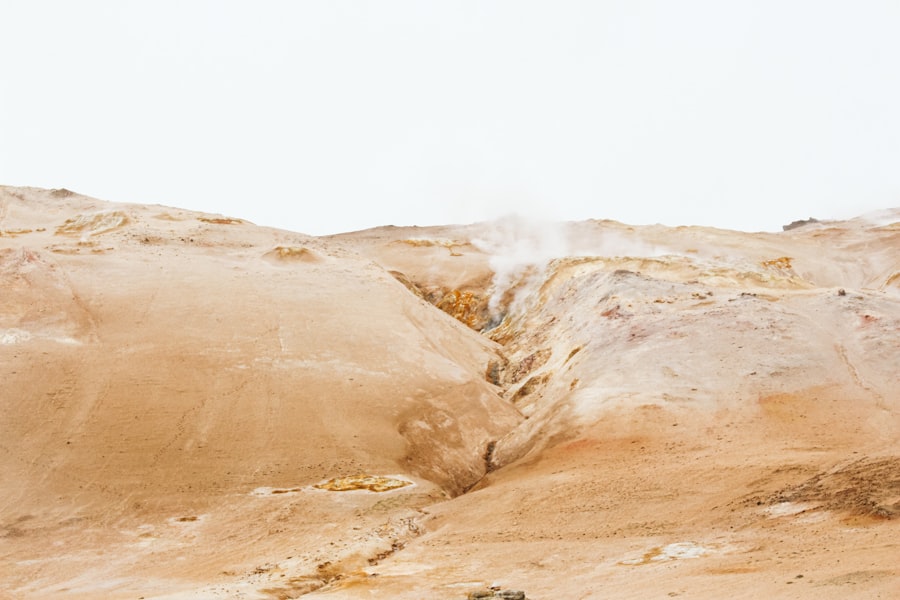Download links
How to install Exploring the Enigmatic Chocolate Hills APK?
1. Tap the downloaded Exploring the Enigmatic Chocolate Hills APK file.
2. Touch install.
3. Follow the steps on the screen.
Description
The Chocolate Hills, a geological wonder located in the Bohol province of the Philippines, are a striking natural formation consisting of over 1,200 symmetrical hills that rise dramatically from the surrounding landscape. These hills, which vary in height from 30 to 50 meters, are primarily composed of limestone, a sedimentary rock formed from the accumulation of marine organisms over millions of years. The unique conical shapes of the hills are the result of a combination of geological processes, including erosion and weathering.
The region was once submerged underwater, and as tectonic activity lifted the land, the limestone formations were exposed to the elements. The process that led to the formation of the Chocolate Hills is a fascinating interplay of natural forces. Rainwater, rich in carbon dioxide, seeps into the ground and reacts with the limestone, gradually dissolving it and creating a series of depressions and valleys.
Over time, this erosion has sculpted the hills into their current form. The distinctive chocolate-brown color of the hills during the dry season, which gives them their name, is due to the grass that covers them turning brown as it dries out. In contrast, during the rainy season, the hills are lush and green, creating a striking visual contrast that attracts tourists from around the world.
Key Takeaways
- The Chocolate Hills are a geological formation in the Philippines, consisting of around 1,200 cone-shaped hills.
- The legend behind the Chocolate Hills involves a giant’s tears and a tragic love story, adding to the mystery and allure of the site.
- The flora and fauna of the Chocolate Hills include various species of plants, birds, and mammals, some of which are endemic to the area.
- The best viewpoints and lookout points for the Chocolate Hills are located in the towns of Carmen, Sagbayan, and Batuan, offering stunning panoramic views.
- The local culture and traditions surrounding the Chocolate Hills are deeply rooted in folklore and religious beliefs, with various festivals and rituals dedicated to the hills.
- Conservation efforts are being made to preserve the natural beauty of the Chocolate Hills, with sustainable tourism practices and reforestation projects shaping the future of this iconic landscape.
The Legend and Mystery Behind the Chocolate Hills
The Legend of the Warring Giants
One popular tale tells the story of two giants who engaged in a fierce battle, hurling boulders at each other across the landscape. According to legend, after their fight ended, they left behind the scattered hills as a reminder of their conflict. This story not only explains the unusual formations but also reflects the rich oral traditions of the local people, who have passed down these tales through generations.
Heartbroken when she rejected him, he wept for days, and his tears formed the hills.
The Power of Folklore and Imagination
Such legends contribute to the allure of the Chocolate Hills, inviting visitors to ponder their origins while immersing themselves in the rich tapestry of Boholano folklore. The stories surrounding these hills serve as a reminder of how natural wonders can inspire creativity and imagination, bridging the gap between nature and human experience.
The Flora and Fauna of the Chocolate Hills

The biodiversity surrounding the Chocolate Hills is as remarkable as their geological features. The area is home to a variety of plant species that thrive in its unique environment. Grasses dominate the landscape, particularly during the dry season when they turn a rich brown hue.
However, during the rainy months, vibrant green vegetation flourishes, creating a lush habitat for various wildlife. The hills are dotted with trees such as acacia and mahogany, which provide shade and shelter for many species. In terms of fauna, the Chocolate Hills are home to an array of wildlife that includes both endemic and migratory species.
Among these are several bird species that can be spotted soaring above the hills or flitting through the trees. The Philippine tarsier, one of the world’s smallest primates, is also found in this region. Known for its large eyes and unique appearance, this nocturnal creature has become an emblematic symbol of Bohol’s rich biodiversity.
Conservation efforts are crucial to protect these species and their habitats from threats such as deforestation and habitat loss.
The Best Viewpoints and Lookout Points
| Viewpoint | Location | Height | Accessibility |
|---|---|---|---|
| Grand Canyon Skywalk | Arizona, USA | 1,219 meters | Accessible by bus or car |
| Machu Picchu | Cusco Region, Peru | 2,430 meters | Accessible by train and hiking |
| Eiffel Tower | Paris, France | 276 meters | Accessible by elevator or stairs |
| Table Mountain | Cape Town, South Africa | 1,085 meters | Accessible by cable car or hiking |
To fully appreciate the breathtaking beauty of the Chocolate Hills, several viewpoints and lookout points have been established for visitors. One of the most popular is the Chocolate Hills Complex in Carmen, which offers panoramic views of the rolling hills stretching as far as the eye can see. This vantage point is equipped with viewing platforms that allow tourists to capture stunning photographs while enjoying the serene landscape.
The complex also features amenities such as restaurants and souvenir shops, enhancing the overall visitor experience. Another notable viewpoint is located at Sagbayan Peak, which provides a different perspective on the hills. This site not only offers sweeping views but also features recreational facilities such as zip lines and playgrounds for families.
The combination of adventure activities and scenic vistas makes Sagbayan Peak a favorite among both locals and tourists. Each viewpoint presents a unique opportunity to witness the Chocolate Hills’ beauty from different angles, ensuring that visitors leave with unforgettable memories.
The Local Culture and Traditions Surrounding the Chocolate Hills
The Chocolate Hills are not just a natural wonder; they are also deeply intertwined with the local culture and traditions of Boholano people. Festivals celebrating local heritage often incorporate elements inspired by these hills. For instance, during the Sandugo Festival held in Tagbilaran City, cultural performances and parades showcase traditional music and dance that reflect Bohol’s history and connection to its natural environment.
The hills serve as a backdrop for these celebrations, symbolizing unity and pride among residents. Additionally, local artisans often draw inspiration from the Chocolate Hills in their crafts. Handicrafts such as woven baskets and traditional textiles may feature designs reminiscent of the hills’ unique shapes.
This artistic expression not only preserves cultural heritage but also promotes local craftsmanship among visitors seeking authentic souvenirs. The integration of natural landmarks like the Chocolate Hills into cultural practices highlights how geography can shape identity and community values.
The Conservation Efforts and Future of the Chocolate Hills

As awareness grows regarding environmental conservation, efforts to protect the Chocolate Hills have become increasingly important. Local government units and environmental organizations have initiated programs aimed at preserving this unique landscape while promoting sustainable tourism practices. These initiatives include reforestation projects to restore native vegetation around the hills and educational campaigns to raise awareness about biodiversity conservation among residents and visitors alike.
The future of the Chocolate Hills hinges on balancing tourism with environmental stewardship. Sustainable practices such as limiting visitor numbers at certain viewpoints or implementing eco-friendly infrastructure can help mitigate human impact on this delicate ecosystem. By fostering a sense of responsibility among tourists and locals alike, there is hope that future generations will continue to enjoy and appreciate this natural wonder while ensuring its preservation for years to come.
The ongoing commitment to conservation reflects a broader understanding that protecting such unique landscapes is essential not only for ecological health but also for cultural heritage and community identity.
FAQs
What are the Chocolate Hills?
The Chocolate Hills are a geological formation in the Bohol province of the Philippines. They are made up of around 1,268 cone-shaped hills, which are covered in green grass that turns brown during the dry season, giving them the appearance of chocolate kisses.
How were the Chocolate Hills formed?
The exact formation process of the Chocolate Hills is still a subject of debate among geologists. However, it is widely believed that they are the result of the uplift of coral deposits and the action of rainwater and erosion over millions of years.
What is the best time to visit the Chocolate Hills?
The best time to visit the Chocolate Hills is during the dry season, which typically runs from late November to May. This is when the grass covering the hills turns brown, giving them their chocolate-like appearance.
Are there any activities to do at the Chocolate Hills?
Visitors to the Chocolate Hills can enjoy activities such as hiking, bird watching, and taking in the panoramic views from the viewing deck. There are also ATV tours and zip-lining options available for those seeking a more adventurous experience.
Is there an entrance fee to visit the Chocolate Hills?
Yes, there is an entrance fee to visit the Chocolate Hills. The fee helps with the maintenance and preservation of the area.





